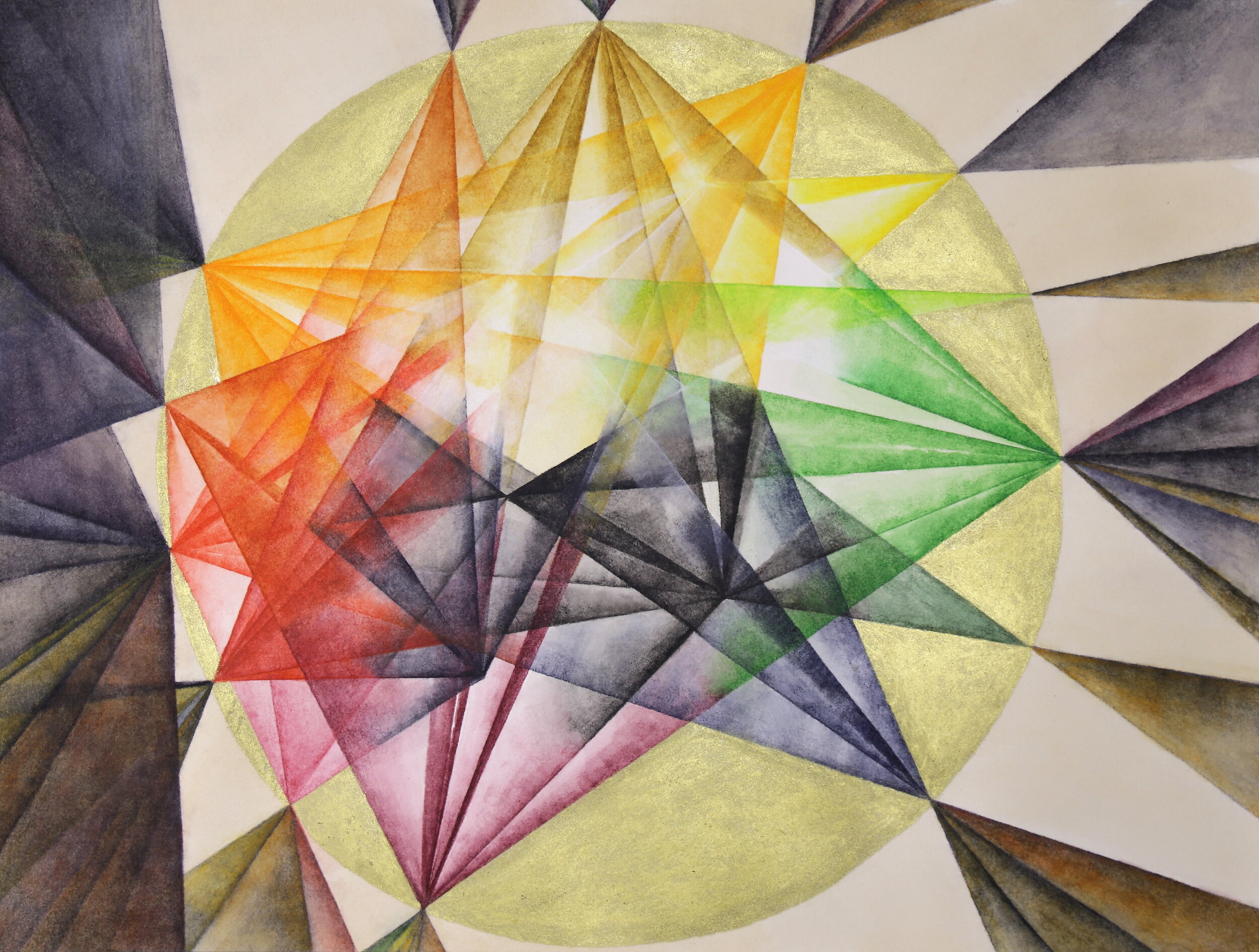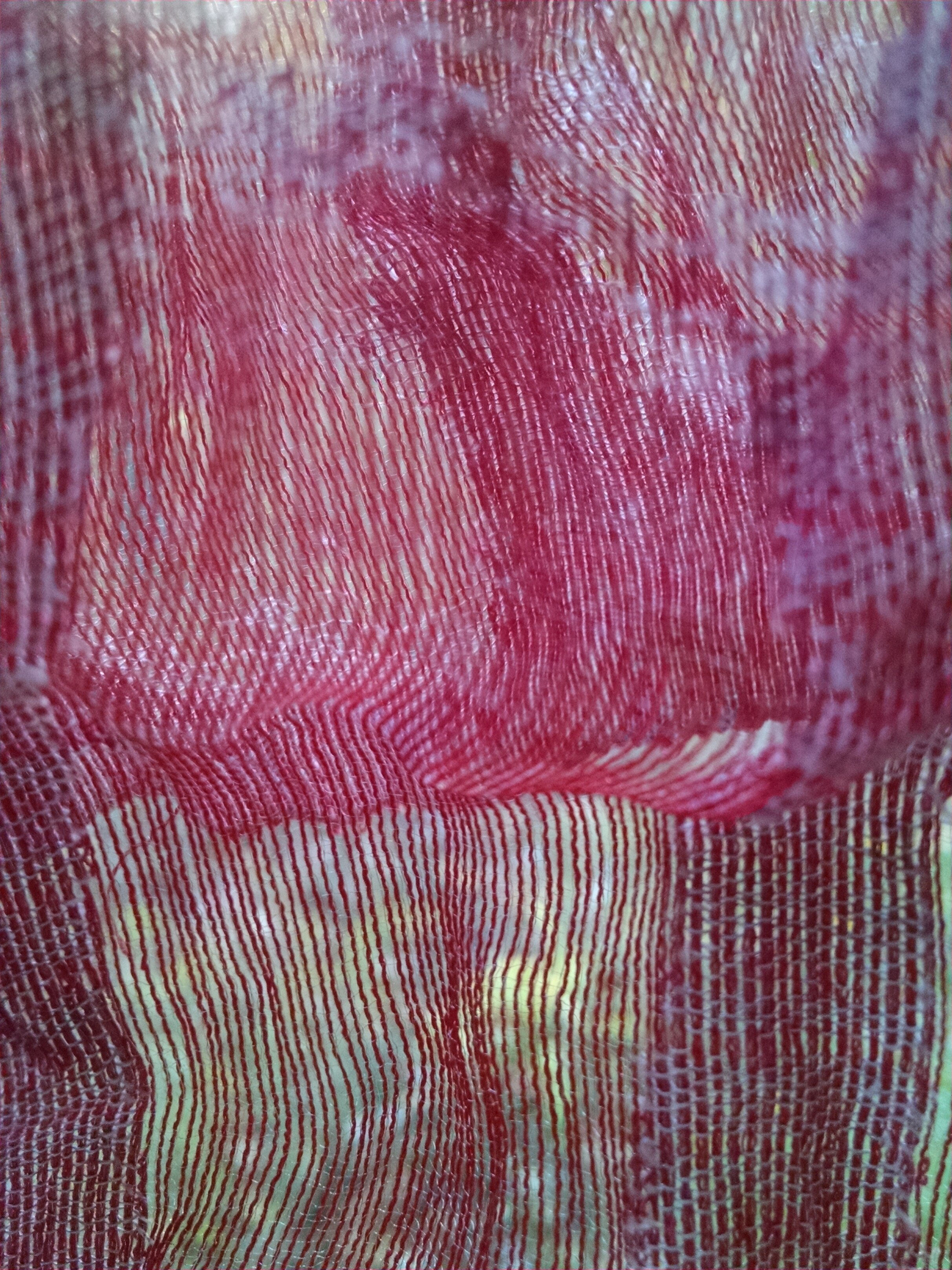I have always been led by a longing to materialize a vision with my own hands. Learning at a young age to sew my own clothes arose from a need even then to have full agency over how cloth covered the canvas of my body. Later experiments with appliqué quilting allowed me to merge creativity with sewing, but when I discovered the masterpieces of Bauhaus weavers Guntha Stölzl and Anni Albers, I was moved to study weaving in order to construct cloth itself. The MFA program I subsequently chose trained me in both textile design and fiber art, teaching me technical skills in weave structure and repeat design while simultaneously encouraging my more artistic inquiry into the interaction of woven textiles with light. This two-pronged curriculum proved valuable when I later lost my job as a designer for the higher-end upholstery market due to domestic textile industry cutbacks; I was able to pivot and set up a fine art weaving studio with the purpose of pursuing my growing interest in the American woven coverlet genre. The bold geometric patterning of these nineteenth-century bed coverings evoked for me images of the wall hangings I had so admired from the Bauhaus weaving workshop. Over the next decade, I focused exclusively on one of these patterns, using its doublewoven tabby structure along with natural dyes to weave a two-layered canvas of color in dialogue with itself.
A major turning point occurred in 2014 when I collaborated with two other artists on a show we called “Synesthesia: Ineffable Pairings of Scent and Cloth”. The concept was to marry material texture with scent, to weave an aroma. Seven proprietary aromatherapy scents based on female archetypes inspired the textures of seven panels of fabric which I then wove, knotted or stitched using some of the engineered yarns and chemical burnout techniques from my graduate thesis work. The haptic approach we took to making cloth for this show drew me away from the time-consuming, technical execution of the wall hangings towards a 4-year examination of my original interest in light and fabric. More profoundly, the exercise of designing cloth to embody a human archetype became for me a larger investigation into trying to weave the territory of body, skin and energy, light and spirit, a mystical and regenerative undertaking. What I discovered, as I worked with increasingly fine yarns and burned away more and more of the physical essence of the fabric I had just woven, was that I was ultimately willing to dispense with loom and fabric altogether but could not do without the element of color. What’s more, I had learned during planning sessions for the Synesthesia show that I had a form of synesthesia myself called grapheme-color, whereby I perceive letters and numbers as very specific and consistent colors in my mind’s eye. Rather than add color back into my woven work, however, I have, over the last five years, chosen to work exclusively with pigment on paper, devising a letter/color coding system to plot text into geometric compositions. This has resulted in my current body of work, Text-tiles. These are works on paper, yet there remains a part of me that feels as though it is still weaving, only now my medium is word rather than wool, text rather than textile, color rather than cloth. In a sense I have become the loom, the mechanism for manipulating color onto paper by way of my own semiotics, much as a textile is built line by woven line through the weaver’s translation of the symbolic notation for threading and treadling. It may just be that after a lifetime of searching for a language to describe light, I have come around to using light as color to describe language, and as such, am painting my own poetry of light.


